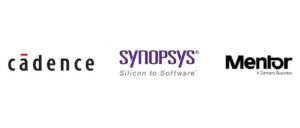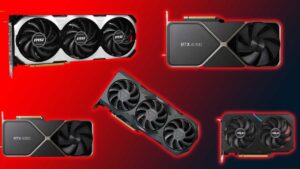Introduction:
In recent years, the semiconductor industry has become a focal point of global economic and technological competition. Additionally, amid trade restrictions imposed by the USA on Chinese tech companies, several Chinese semiconductor firms are emerging as formidable challengers to their US counterparts.
This blog post explores eight such companies identified by Stanford C Bernstein Research, shedding light on their areas of expertise and how they can potentially overcome trade restrictions to compete on a global scale.
Follow us on Linkedin for everything around Semiconductors & AI
AMEC vs. Lam Research:
AMEC (Advanced Micro-Fabrication Equipment Inc.): AMEC specializes in the development and manufacturing of advanced semiconductor manufacturing equipment. It is including deposition, etching, and cleaning systems.
Their technology focuses on enabling advanced semiconductor processes such as FinFET, 3D NAND, and DRAM.
With a strong emphasis on innovation and research, AMEC aims to develop cutting-edge technologies that can rival those of its US counterpart, Lam Research.
Cambricon Corp. vs. Nvidia:
Cambricon Corp.: Cambricon Corp. is a leader in AI chip design and development, focusing on providing efficient and high-performance solutions for AI applications. Moreover,their products include AI accelerators, deep learning processors, and neural network processing units (NPUs). Cambricon competes directly with Nvidia in the AI chip market. As AI continues to play a crucial role in various industries, Cambricon’s commitment to advancing AI technology positions it as a strong competitor against Nvidia.
Read More: How NVIDIA GPUs have Evolved From Tesla to Ampere to Hopper – techovedas
Hua Hong Semiconductor Limited vs. GlobalFoundries:
Hua Hong Semiconductor Limited: Hua Hong Semiconductor Limited is a leading pure-play semiconductor foundry. It is specializing in the manufacturing of advanced logic and mixed-signal integrated circuits (ICs). Additionally,their advanced process technologies include 90nm, 65nm, 55nm, and beyond.
With a focus on research and development, Hua Hong aims to enhance its manufacturing capabilities.
It is potentially surpassing its US counterpart, GlobalFoundries, in terms of process technology and production capacity.
Hygon Information Technology Co. vs. AMD:
Hygon Information Technology Co.: Hygon Information Technology Co. is a joint venture between AMD and Tianjin Haiguang Advanced Technology Investment Co., Ltd. (THATIC), focusing on the development and production of x86 server processors for the Chinese market.
Moreover, Leveraging AMD’s x86 processor technology and expertise, Hygon aims to compete with AMD in the server processor market.
This collaboration positions Hygon as a significant player in the server processor market, challenging AMD and potentially gaining an edge in the face of trade restrictions.
Read More:5 Reasons OpenAI become World’s 3rd Largest Startup in Just 6 years – techovedas
NAURA vs. Applied Materials:
NAURA: NAURA is a leading semiconductor equipment manufacturer, specializing in plasma etching, Chemical vapor deposition (CVD), physical vapor deposition (PVD), and ion implantation systems.
Their equipment is essential for the fabrication of advanced semiconductor devices. With a focus on technological advancements and efficient production processes.
NAURA aims to carve a niche for itself in the semiconductor equipment industry, challenging competitors like Applied Materials.
Read more: 3 nm Chip from Mediatek and TSMC has arrived
Piotech Inc. vs. Lam Research:
Piotech Inc.: Piotech Inc. is a leading provider of semiconductor manufacturing equipment, specializing in plasma etching and deposition systems.
Their equipment is used in the production of advanced semiconductor devices, including logic, memory, and power devices. Leveraging its technological expertise and a commitment to research, Piotech Inc. aims to gain a competitive advantage in the global market, challenging established players like Lam Research.
Silergy vs. Texas Instruments:
Silergy: Silergy is a leading provider of analog and mixed-signal integrated circuits (ICs), specializing in power management, LED lighting, and audio amplification solutions.
Their products are used in a wide range of applications, including consumer electronics, industrial automation, and automotive systems.
With a focus on innovation and quality, Silergy aims to challenge Texas Instruments in the analog and mixed-signal semiconductor market. This is through offering competitive solutions for a variety of applications.
Read More: What is Artificial General Intelligence (AGI)and Why Should You Care? – techovedas
Conclusion:
While trade restrictions may pose challenges to Chinese semiconductor companies, the identified companies are strategically positioned to overcome these obstacles.
By investing in research and development, fostering innovation, and emphasizing product quality, these Chinese firms have the potential to not only challenge but also surpass their US equivalents.
The semiconductor industry’s landscape is evolving, and these emerging Chinese giants are poised to play a pivotal role in shaping its future.



